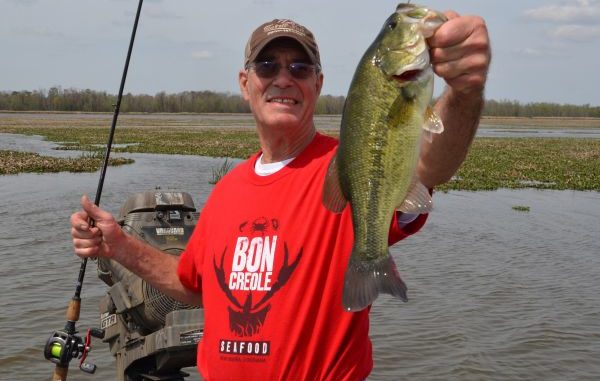
For many, if not most outdoorsman, the names “Atchafalaya Basin” and the “Atchafalaya Spillway” are synonymous.
But the fact is, they are not.
The term “basin” is a geological term and refers to the fact that the low, swampy area between the relatively higher grounds along the Mississippi River on the east and Bayou Teche on the west is shaped like a basin or bowl.
Bayou Teche itself is an old route of the Mississippi River.
Basins such as this have repeatedly formed over the last 10,000 years as the Mississippi River flopped from one course to another. Once the river built up high banks extending into the Gulf of Mexico, it would break through those banks and carve a new, shorter channel to the Gulf through a low basin.
When that basin filled up with sediment deposited by the river, the big river would again seek a new course, something that has happened about every 1,000 years.
The next logical route for the Mississippi River was right down the center of what we now call the Atchafalaya Basin.
And, in fact, the Atchafalaya River had captured all of the flow of the Red River (which once emptied into the Mississippi River) and much of the Mississippi’s flow, as well. Every year, it took more and more of the flow.
The route of water down the Atchafalaya River was only 142 miles compared to 315 miles down the Mississippi River.
Water always follows the shortest route downhill.
Then, in 1927 a phenomenal flood of the Mississippi River created the largest peacetime disaster in the history of the United States.
In 1928, the U.S. Congress authorized the construction of massive levees to control the river’s flow.
The project included two parallel levees and the dredging of the Atchafalaya River’s channel down the center of the area controlled by the levees. In 1955, Congress authorized the construction of control structures on the Mississippi River near the point where the Atchafalaya River is formed by the combined flows of the Mississippi and Red rivers.
Construction of the levees and the control structure effectively created a spillway for a controlled part of the Mississippi River’s flow to spill into the Atchafalaya.
The location of the huge guide levees was not equally spaced within the geological basin. Some low, wet areas that were historically within the Atchafalaya Basin’s swamps were left outside the levees.
On the east side of the spillway, large swamps extending from Grosse Tete southward through Bayou Sorrell, Bayou Pigeon, Bayou Corne, Pierre Part and Belle River were leveed off from the Atchafalaya River.
On the west side, fewer swamps were fenced off from the river, primarily those around Dauterive and the lakes that make up Lake Fausse Pointe.
Technically, therefore, everything within the two guide levees paralleling the Atchafalaya River 15 or so miles apart is the Atchafalaya Spillway.
On the other hand, all of the low lands between the Mississippi River and Bayou Teche can be considered part of the Atchafalaya Basin.
The location of Randy Montegut’s camp and the area his grandson, Christopher Louviere, likes to fish are part of the Basin, but not part of the Spillway.
Most fisheries biologists would state with conviction that the areas outside of the guide levees produce fewer pounds of fish per acre of water, since they are cut off from the fertilizing effects of the river’s waters.
However, Louviere would disagree for two reasons.
First, he claims the Dauterive-Fausse Pointe area provides more dependable fishing.
“When the Basin (well, actually, the Spillway) is hot, it’s hot; when it’s not, it’s not!” Louviere said. “What is inside the levees is very dependent on water levels. Right now (February), it’s at 14 feet at (the) Butte Larose (gauge); the whole area is turbid — muddy and unfishable.
“Also, you also don’t get black water events (outside the levees). The leaves on the swamp bottoms (inside the levees) decay and deplete the water’s oxygen during high water. Then, when water levels fall, the bad water moves out and spreads.
“I’m not so sure that it kills the fish, but it does displace them.”